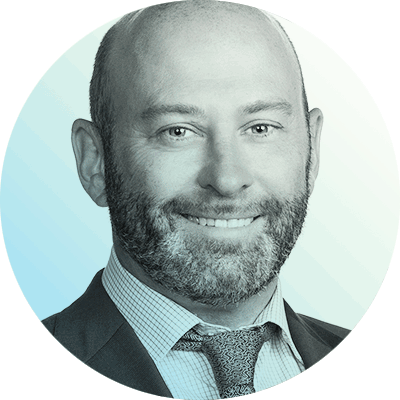Financial Success Formula: Master Property Investing Basics To Create Wealth – Part Three

Putting it all together
Now that we’ve covered the basics of both market drivers and finances, let’s dig a bit deeper to see how we’re going to put that knowledge into action.
In part one of this series we discussed marketplace drivers. Let’s see how we can spot these drivers in a marketplace:
- Infrastructure
- What to look for: Look for indications that money has been earmarked for improvements and upgrades in basic structures of an area, such as hospital expansions, road construction, bridge improvements, airport expansions, new shopping centres, etc.\
- Where to look: News outlets, council minutes/announcements, even legislation
- Supply and demand
- What to look for: High vacancy rates means that the supply in the area is plentiful. Find areas where the vacancy rates are low – your best bet for higher yields is in these locations.
- Where to look: Property managers are a great resources as are market data suppliers such as RPData or Todd Heron White.
- Population
- What to look for: A growing metropolis is a good indicator of growth in a region. Look for an increase above the average rate of growth which can be attributed to natural growth – a/k/a (births/deaths).
- Where to look: The ABS has a large number of growth statistics, including growth predictions for the region.

- Demographics
- What to look for: Family types, e.g. singles, couples, with/without children, employment, e.g. blue collar and/or white collar professionals, average age of population, etc.
- Where to look: Again, the ABS has a great number of detailed statistics, including historical data.
- Economics
- What to look for: Number and size of employers, including and in addition to schools, universities, hospitals and capabilities of the infrastructure to handle growth projections (including housing supply).
- Where to look: News outlets, property magazines, government websites, reporting agencies such as RPData or Residex.
- Yield variation
- What to look for: Search for areas which are one to two percent above their last five year rental yield average. Simply remember that growth follows yields.
- Where to look: Online real estate websites, property magazines, data sites such as RPData , Residex or even valuation companies such as Herron Todd White.
What is a structure and which one should I choose?
There are three ways to own property as a property investor:
- You can own the property in your own name.
- You can own it in a company or trust structure – including a combination of a number of different types of trust and company structures.
- You can own it through your superfund.
As an individual

Benefits
Tax deductions
When you purchase property as individual, placing it in your own name, you can easily get a personal tax deduction which you can use (via the PAYG variation (221D)) to offset the costs of owning the investment property.
Finance
It’s much easier to borrow money in your own name.
Structure
Simple to create and inexpensive to manage.
Disadvantages
Asset protection
If you have a problem and someone wants to take your assets, your personal name is very open to attack.
Taxation
Possible capital gains tax would eat away at any gains.
In a company or trust structure

Benefits
Asset protection
Preservation of family home by leaving out family members as possible litigants to any lawsuit against the company.
Taxation
Tax rate is capped at 30%
Disadvantages
Taxation
Unless you use specialised trusts, you cannot use negative gearing or tax deductions.
Finance
Difficult to obtain financing.
Structure
Costly to set up and maintain – cost prohibitive should you choose to own many properties.
In a superfund

Benefits
Taxation
Low tax rate (15% on average) on contributions.
Over the age of 60 – zero capital gains tax!
Before age of 60 – capital gains tax as low as 10%!
Structure
Assets are protected from creditors and insolvency.
Disadvantages
Money is tied up until the individual is of retirement/eligibility age.
NOTE: If you want to boost your returns and use gearing, your property must be part of a self-managed super fund.
We hope you have enjoyed this series on property investing. If you missed our previous articles, click here for part one and here for part two.
To find out even more than we were able to cover in our short series, grab a friend or family member and come along to one of our Property Investor Nights. They’re free, but don’t let the lack of a fee deceive you – they’re packed with lots of information, including how you can pay off your home loan in as little as 6 years, how you can replace your income in 5 years and much, much more!

Successful Property Investors Don’t Quit Their Day Job
You need that income! One of the primary things you need to be a successful property investor is a job. Why? Because you need money. You need a job to borrow money. You need savings or some cash to buy your first property. But the sad fact is, a lot of people...
6 Ways To Speed-Up Your Next Property Purchase
Get There Faster If you are already a property investor with one or even two properties, first of all, congratulations. You’ve taken some seriously great steps in creating your future wealth and a pathway to a work-less, play-more retirement with passive...
Property investing: Five ways to create cashflow boom!
When it comes to property investment there are some things you can never have enough of.
When it comes to property investment there are some things you can never have enough of. Good tenants, reliable builders, a great relationship with your bank.
But more than anything what you need is good cash flow.
Having a steady income of cash means never having to dip into your own pocket to top up repayments, complete repairs or make another purchase.
Here are the top five ways you can ensure the cash keeps flowing, so you can keep your investment portfolio growing.
Lock it in! How to protect your equity
Don’t be caught without it.
As a property investor who is building a portfolio, it’s vital that you have access to your equity whenever you need it.
There’s nothing more frustrating than finding that perfect new property to purchase, only for it to be held up – or worse still, lost completely – because your finances weren’t in good shape.
Having an interest-only loan structure with a healthy off-set account is a great way to ensure you have equity at your fingertips whenever you need it, but that’s not the only way…



